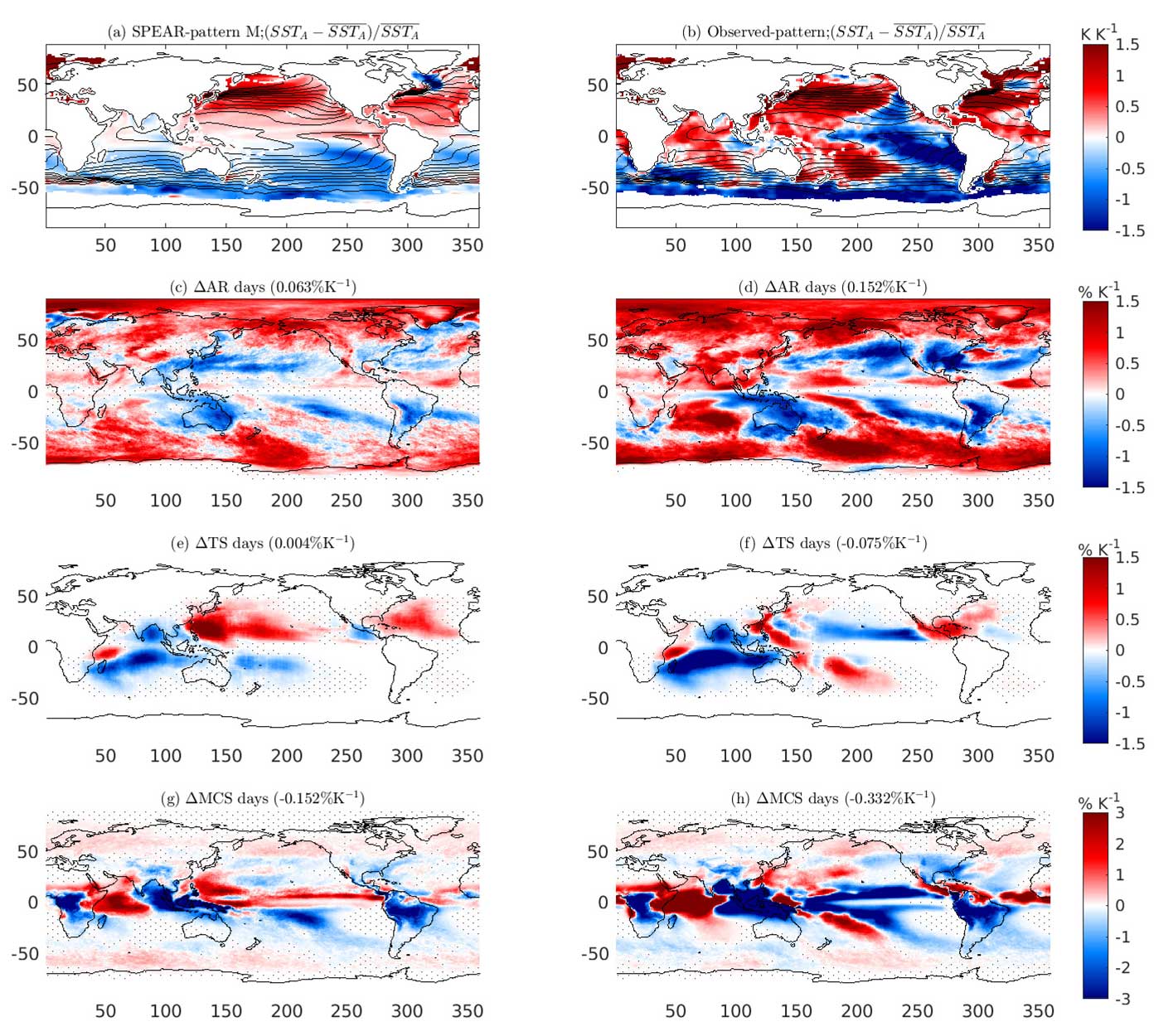June 14th, 2024
Key Findings
- This study explored the implications of model biases in the recent sea surface temperature trend on near-term future predictions, with a special emphasis on high-impact storm statistics.
- Model biases in SST trend patterns are shown to have profound implications for near-term projections of high-impact storm statistics, including the frequency of atmospheric rivers, tropical storms and mesoscale convection systems, as well as for hydrological and climate sensitivity.
- If the future SST warming pattern continues to resemble the observed pattern from the past few decades rather than the model-simulated/predicted patterns, these results suggest:
- A drastically different future projection of high-impact storms and their associated hydroclimate changes, especially over the Western Hemisphere.
- Stronger global hydrological sensitivity.
- Substantially less global warming due to stronger negative feedback and lower climate sensitivity.
Ming Zhao, Thomas Knutson. npj Climate and Atmospheric Science. DOI: 10.1038/s41612-024-00681-7
Recent studies indicate that virtually all global climate models have difficulty simulating observed sea surface temperature (SST) trend patterns over the past four decades. Models produce enhanced warming in the eastern Equatorial Pacific (EPAC) and Southern Ocean (SO) warming, while observations show intensified warming in the Indo-Pacific Warm Pool (IPWP) and slight cooling in the eastern EPAC and SO.
Using Geophysical Fluid Dynamics Laboratory’s latest higher resolution atmospheric model and coupled prediction system, the authors show that model biases in sea surface temperature trend pattern have profound implications for near-term projections of high-impact storm statistics, including the frequency of atmospheric rivers, tropical storms, and mesoscale convection systems, as well as for hydrological and climate sensitivity.
If the future SST warming pattern continues to resemble the observed pattern from the past few decades rather than the GCM simulated/predicted patterns, these results suggest a drastically different future projection of high-impact storms and their associated hydroclimate changes, especially over the Western Hemisphere. A stronger global hydrological sensitivity would also be expected, and substantially less global warming due to stronger negative feedback and lower climate sensitivity.
The authors utilized GFDL’s high-resolution global atmospheric model AM4 (C192AM4) to isolate and quantify SST trend patterns over the EPAC, IPWP, SO, and the North Atlantic tropical cyclone Main Development Region, and used them to understand the simulated differences. Results showed that sea surface temperature trend patterns in the EPAC and North Atlantic tropical cyclone Main Development Region are crucial for modeled differences in atmospheric river and mesoscale convective system frequency, while those in the IPWP and North Atlantic tropical cyclone Main Development Region are essential for differences in tropical storm frequency over the North Atlantic.
Global climate models are one of the most important tools for predicting future change in the Earth’s climate under anthropogenic forcings. These models are not perfect and contain biases when evaluated against observations. Some biases may be more important than others. It is important to identify the key biases relevant to future predictions so that the modeling community can focus on improvements.



